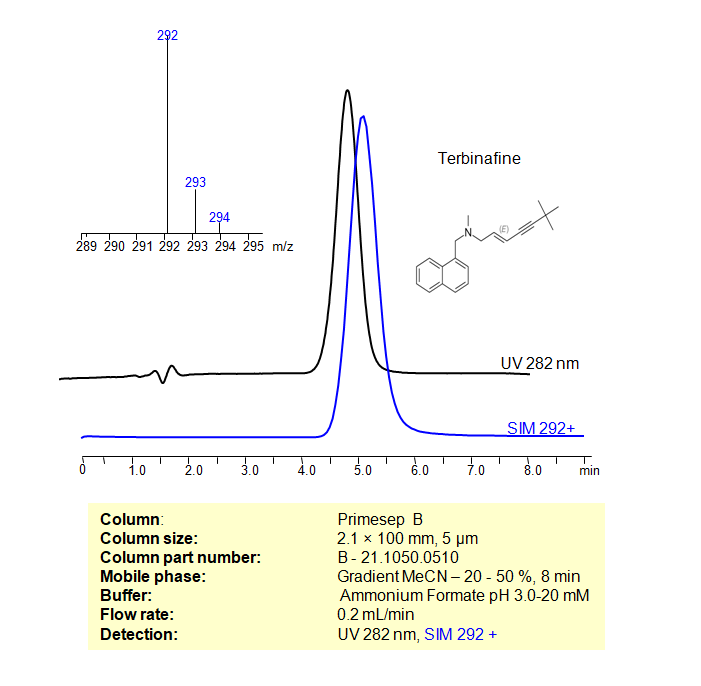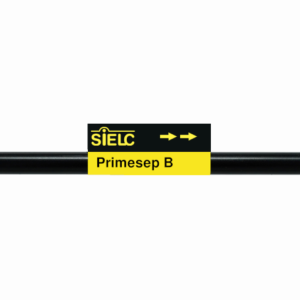HPLC Method for Analysis of Terbinafine on Primesep B by SIELC Technologies
High Performance Liquid Chromatography (HPLC) Method for Analysis of Terbinafine
Terbinafine is an antifungal medication commonly used to treat fungal infections, particularly those caused by dermatophytes. Here are some key points about terbinafine:
Mechanism of Action: Terbinafine is classified as an allylamine antifungal. It works by inhibiting the enzyme squalene epoxidase, which is important in the fungal ergosterol synthesis pathway. This disruption results in a deficiency of ergosterol in the fungal cell membrane and an accumulation of squalene, which is toxic to the fungus.
Terbinafine can be retained, and analyzed on a Primesep B mixed-mode stationary phase column using an isocratic analytical method with a simple mobile phase of water, Acetonitrile (MeCN), and a ammonium format as a buffer. This analysis method can be detected using UV at 283 nm, an Evaporative Light Scattering Detector (ELSD), or any other evaporative detection method (CAD, ESI-MS)
| Column | Primesep B, 2.1 x 100 mm, 5 µm, 100 A |
| Mobile Phase | Gradient MeCN – 20-50%, 8 min |
| Buffer | Ammonium Formate pH 3.0-20 mM |
| Flow Rate | 0.2 ml/min |
| Detection | UV, 282 nm, SIM 292+ |
| Class of Compounds | Allylamines |
| Analyzing Compounds | Terbinafine |
Application Column
Primesep B
Column Diameter: 2.1 mm
Column Length: 100 mm
Particle Size: 5 µm
Pore Size: 100 A






